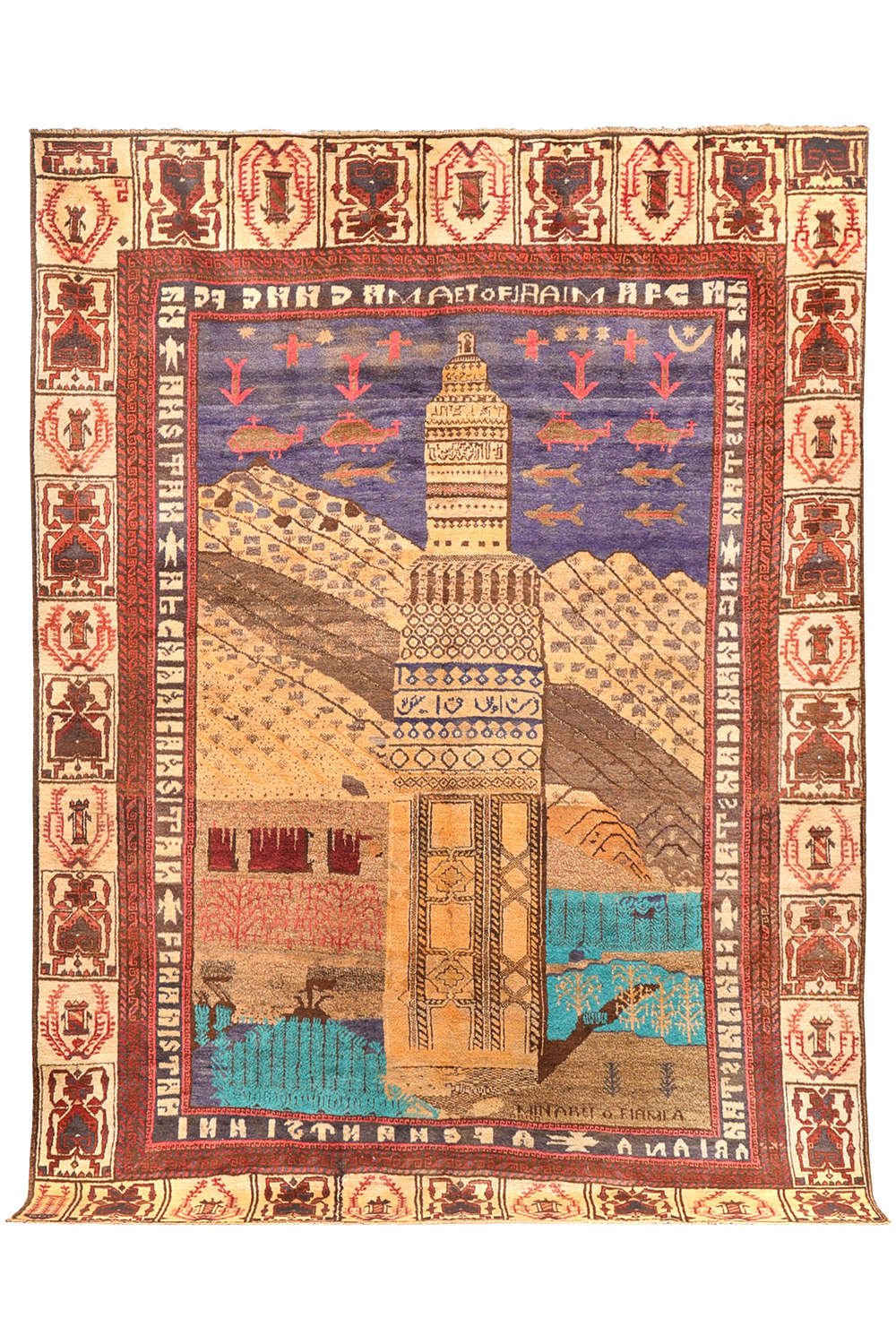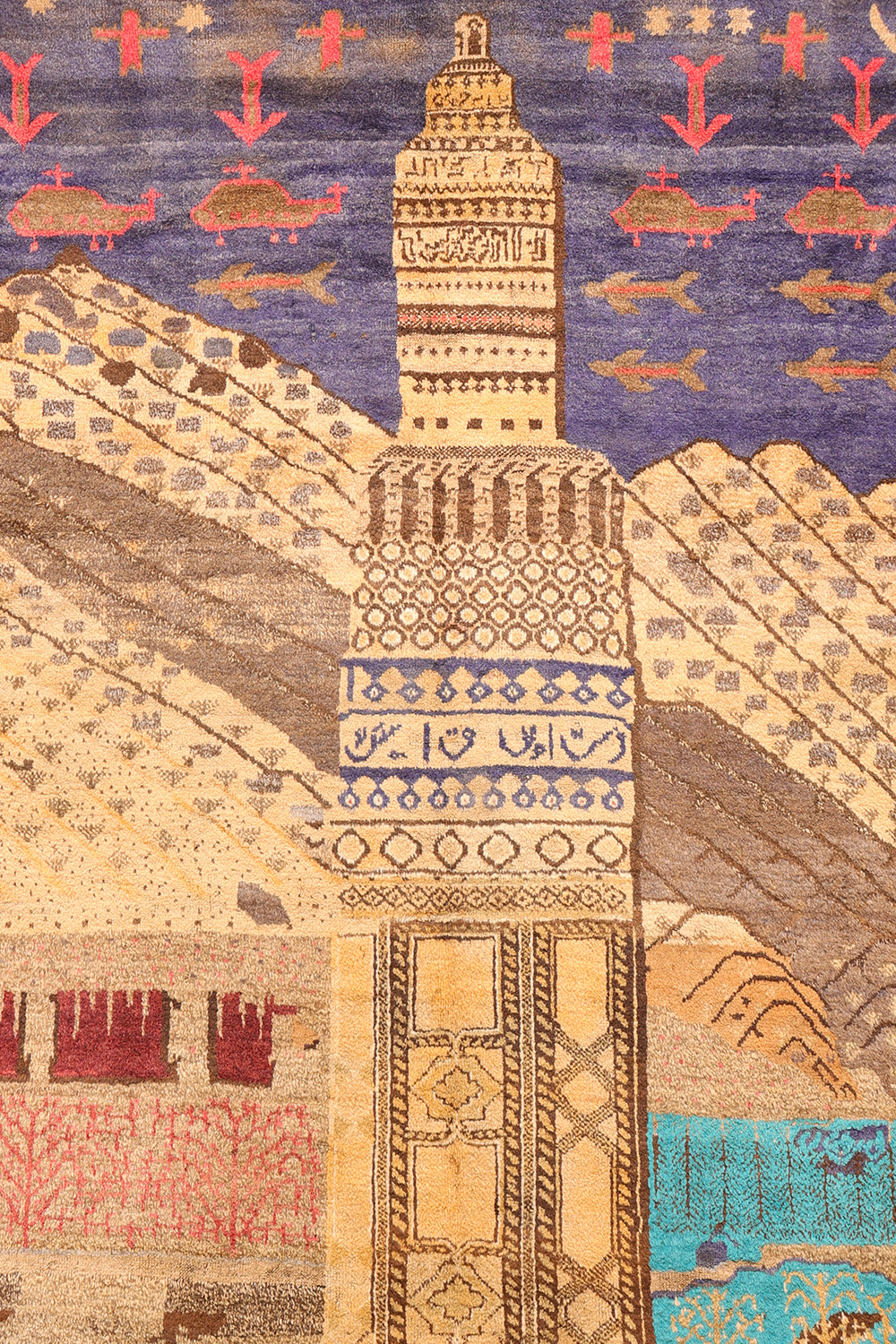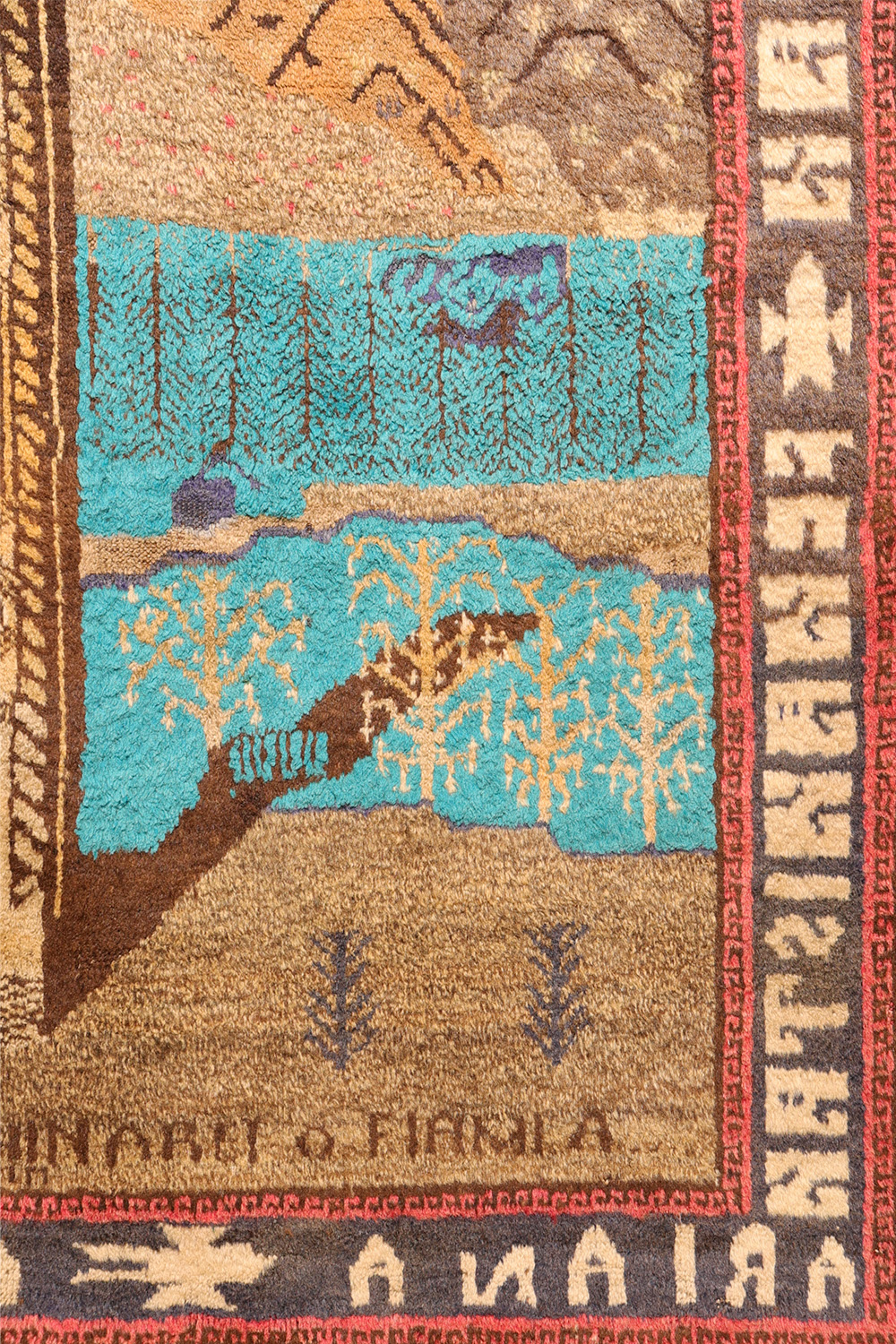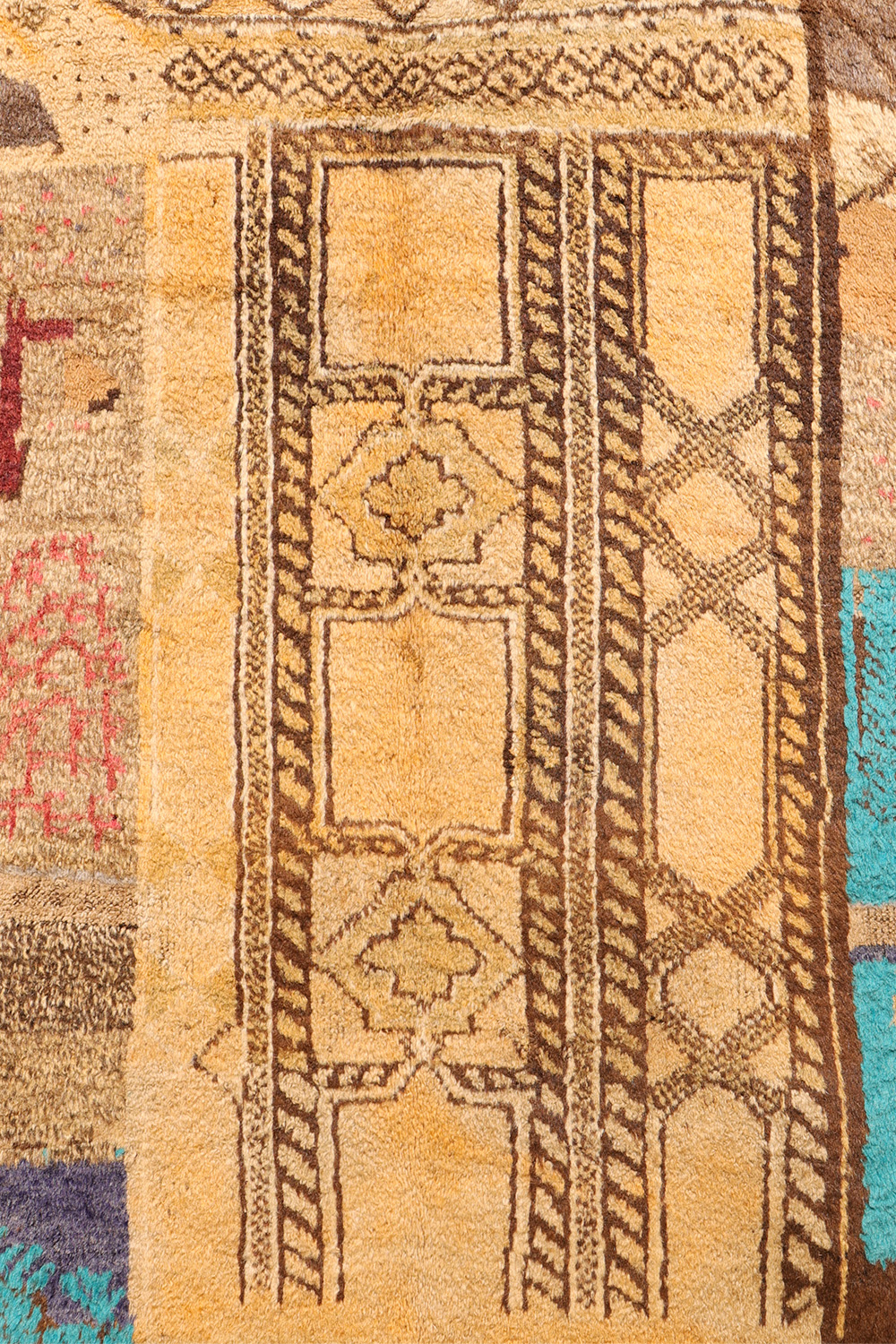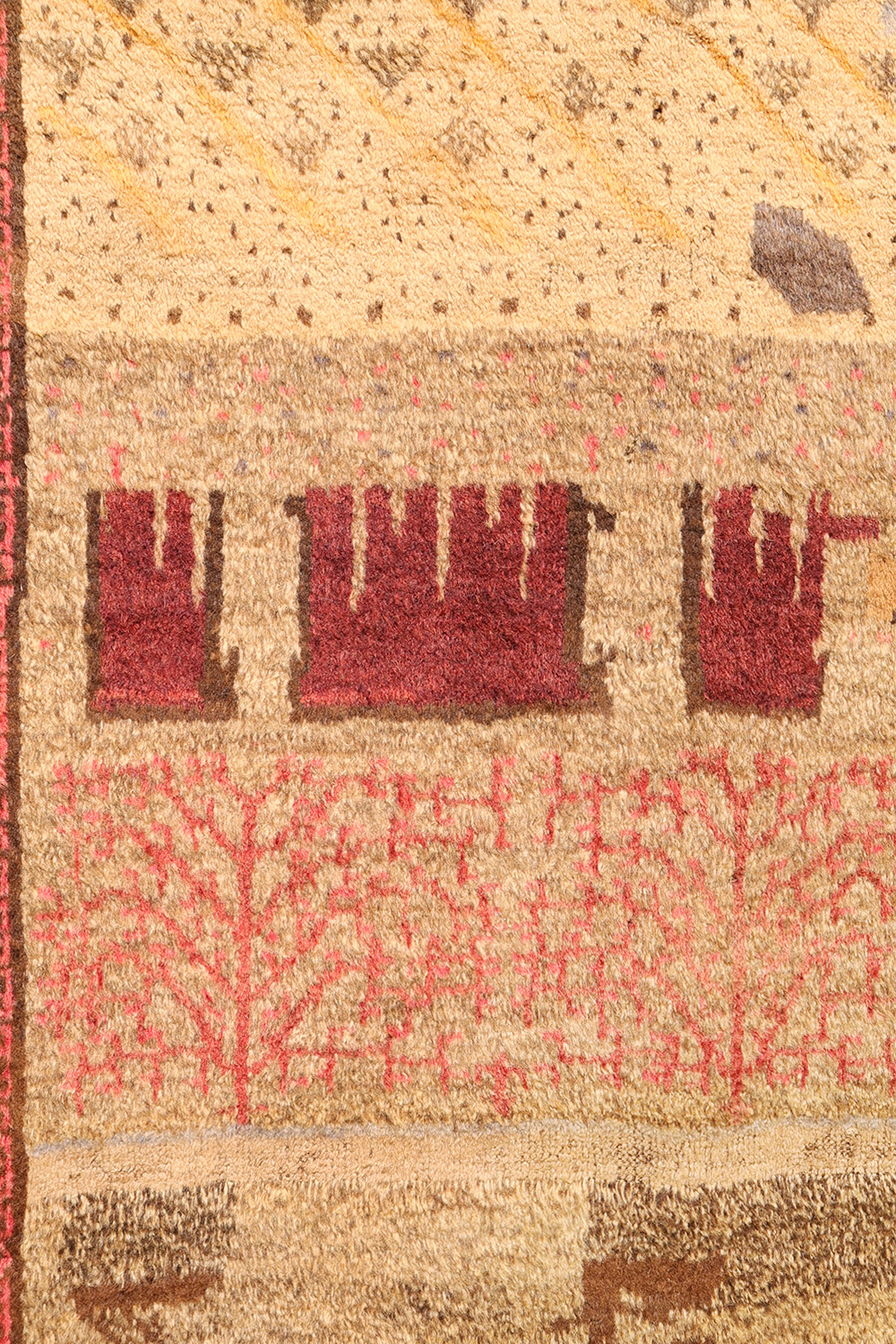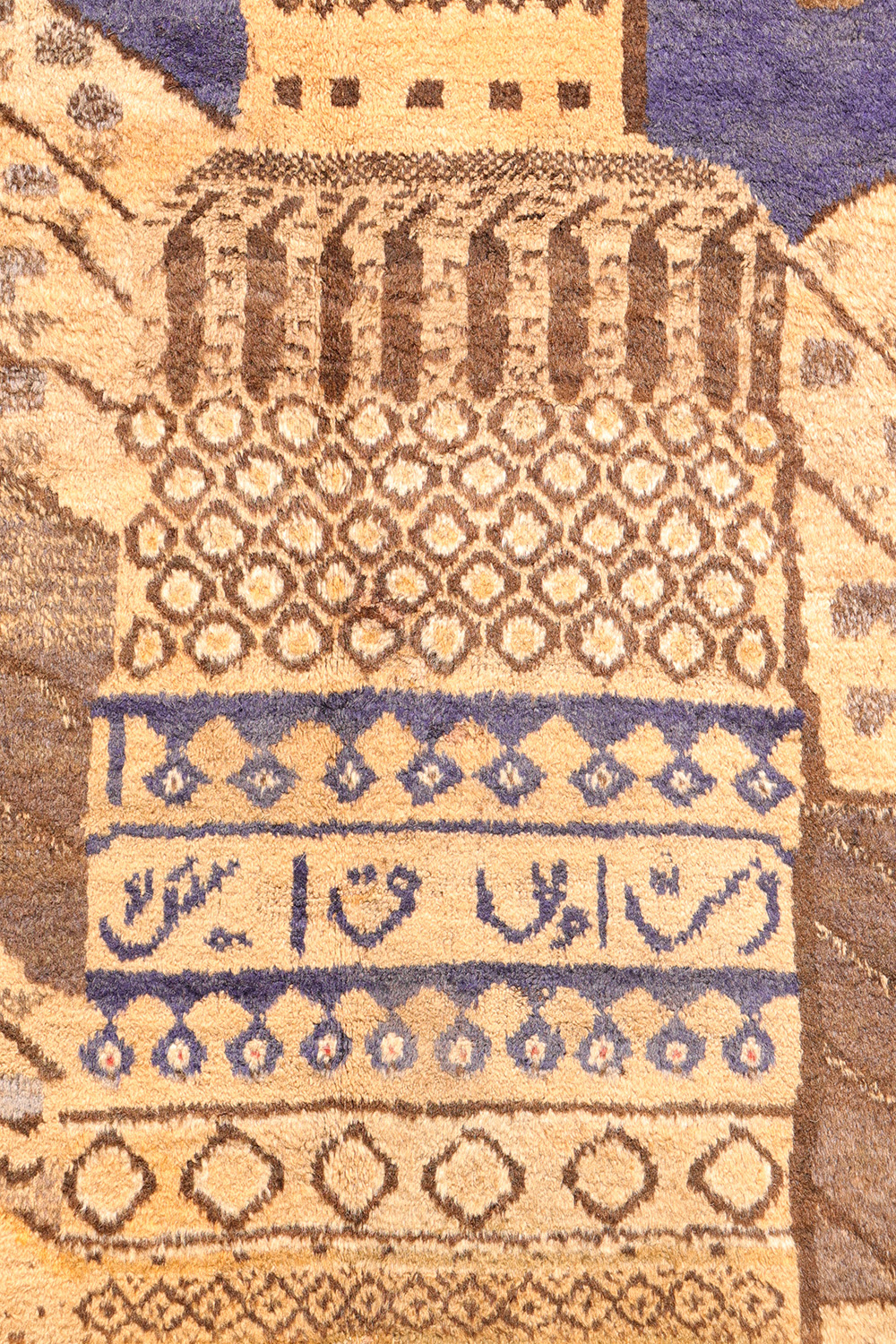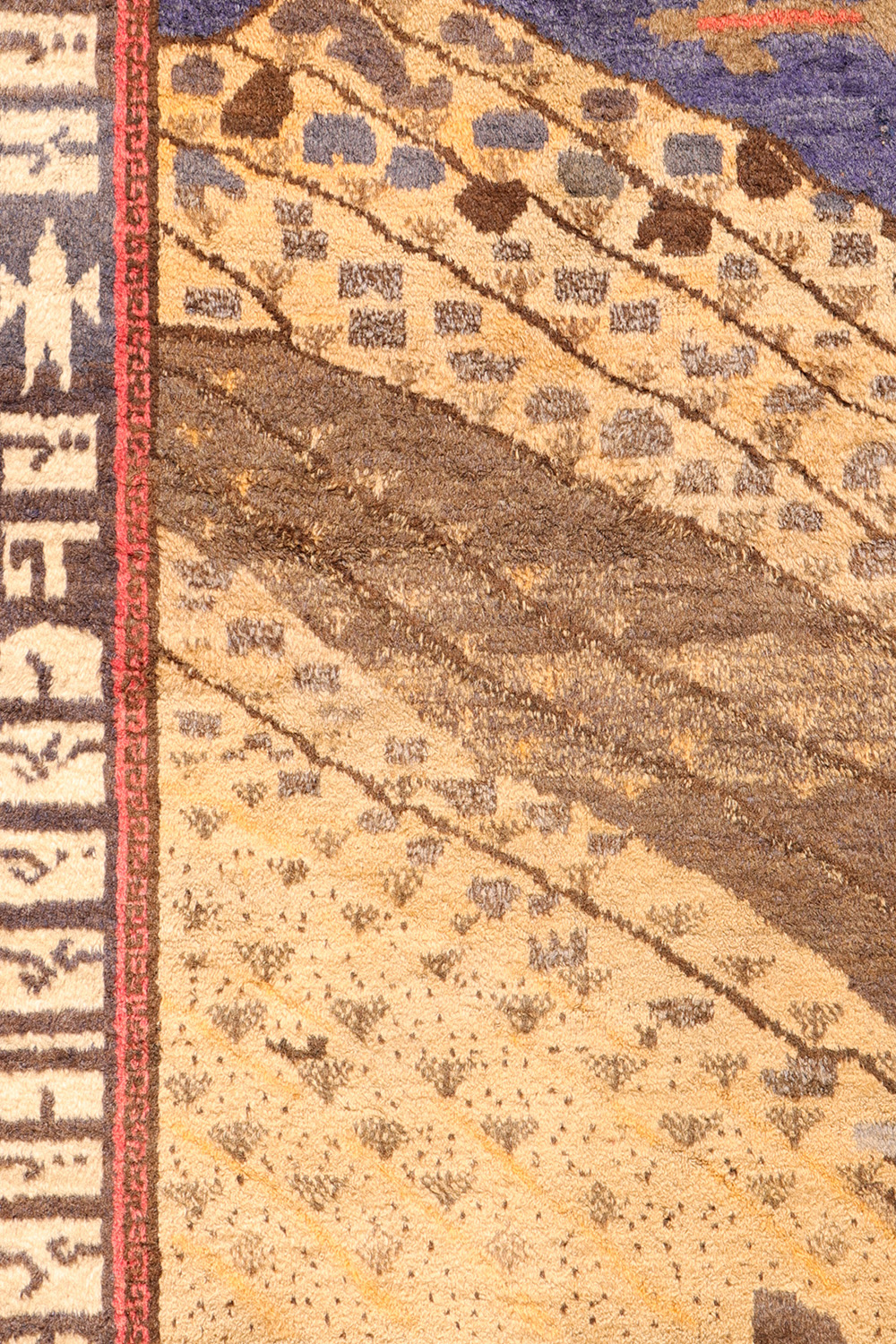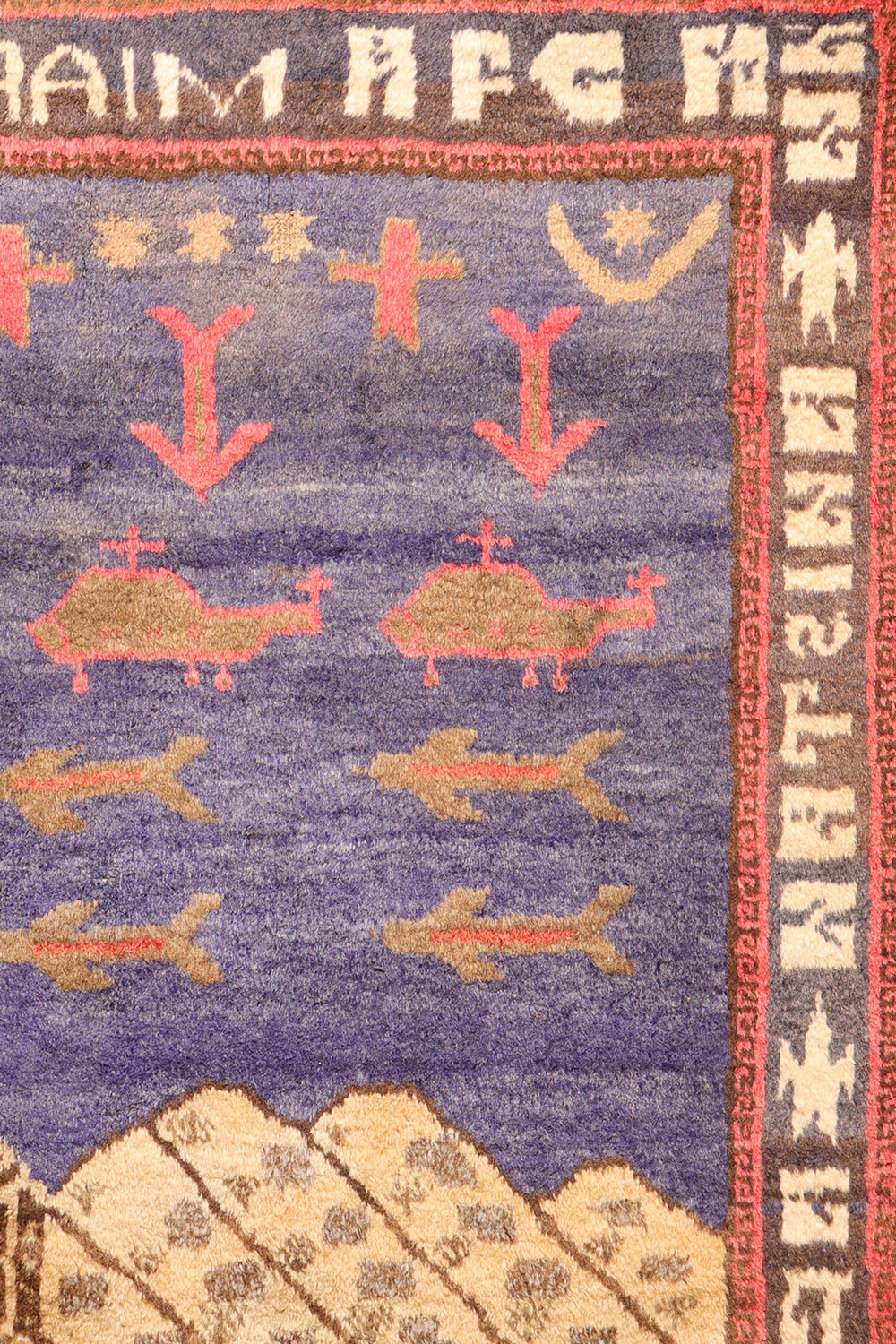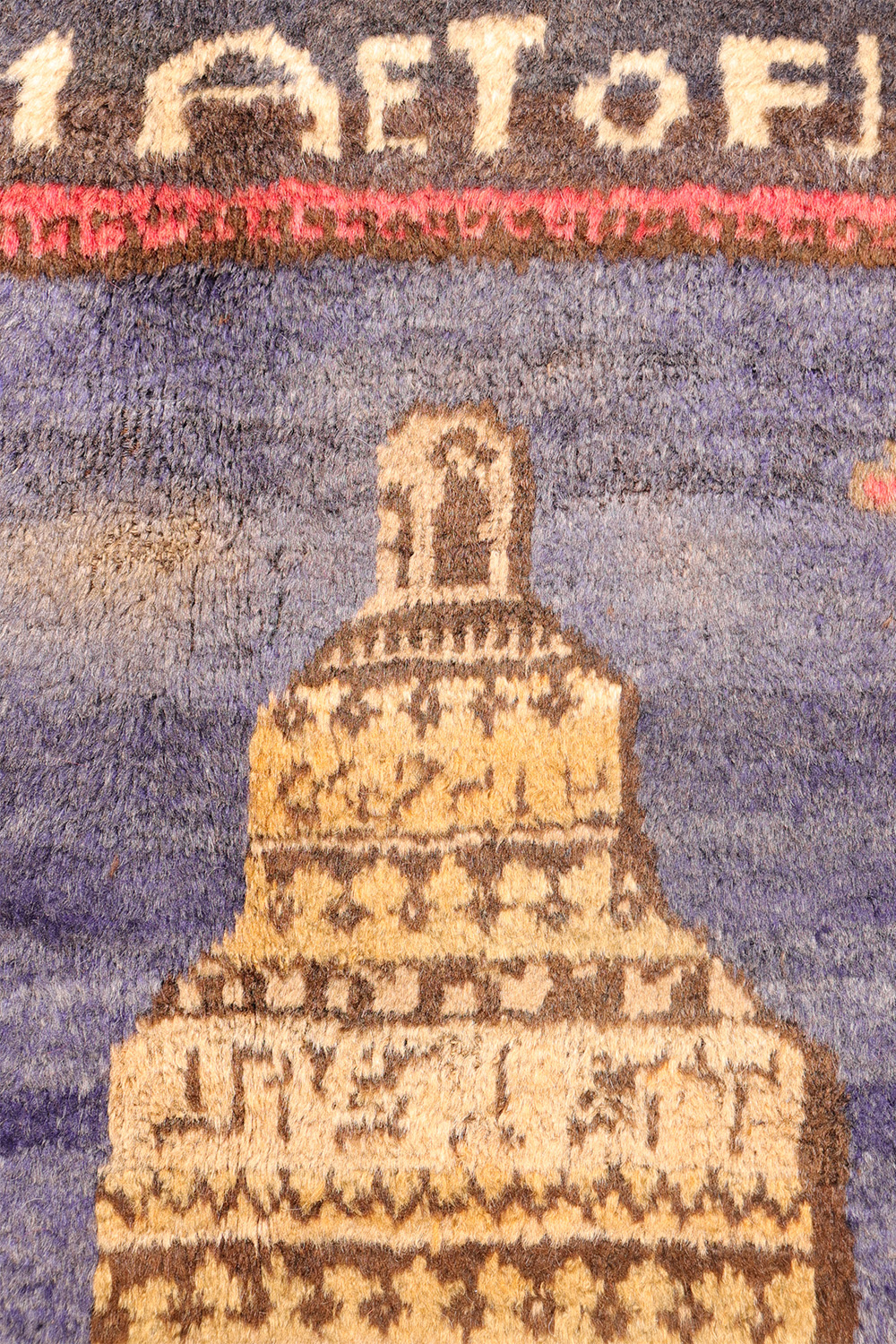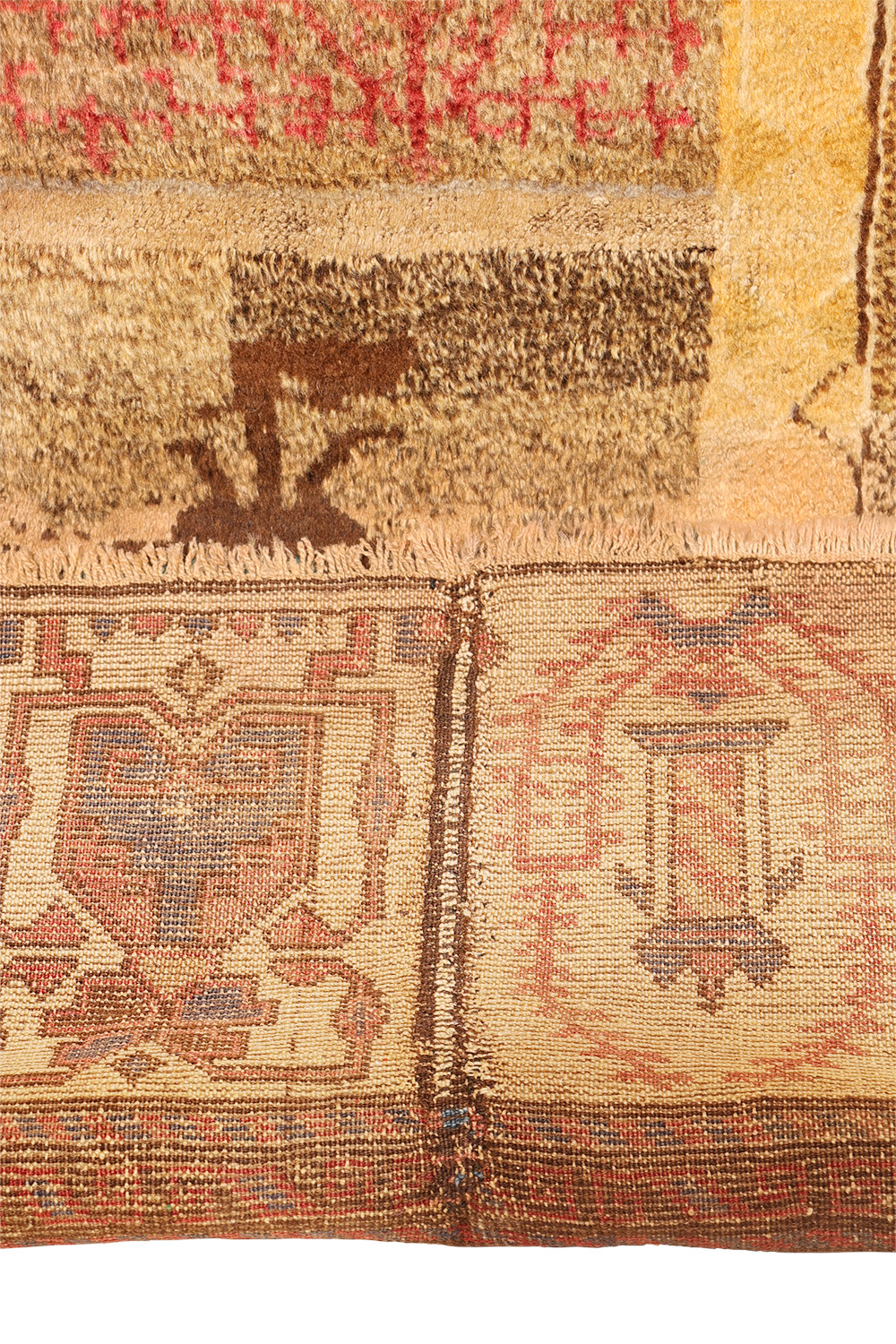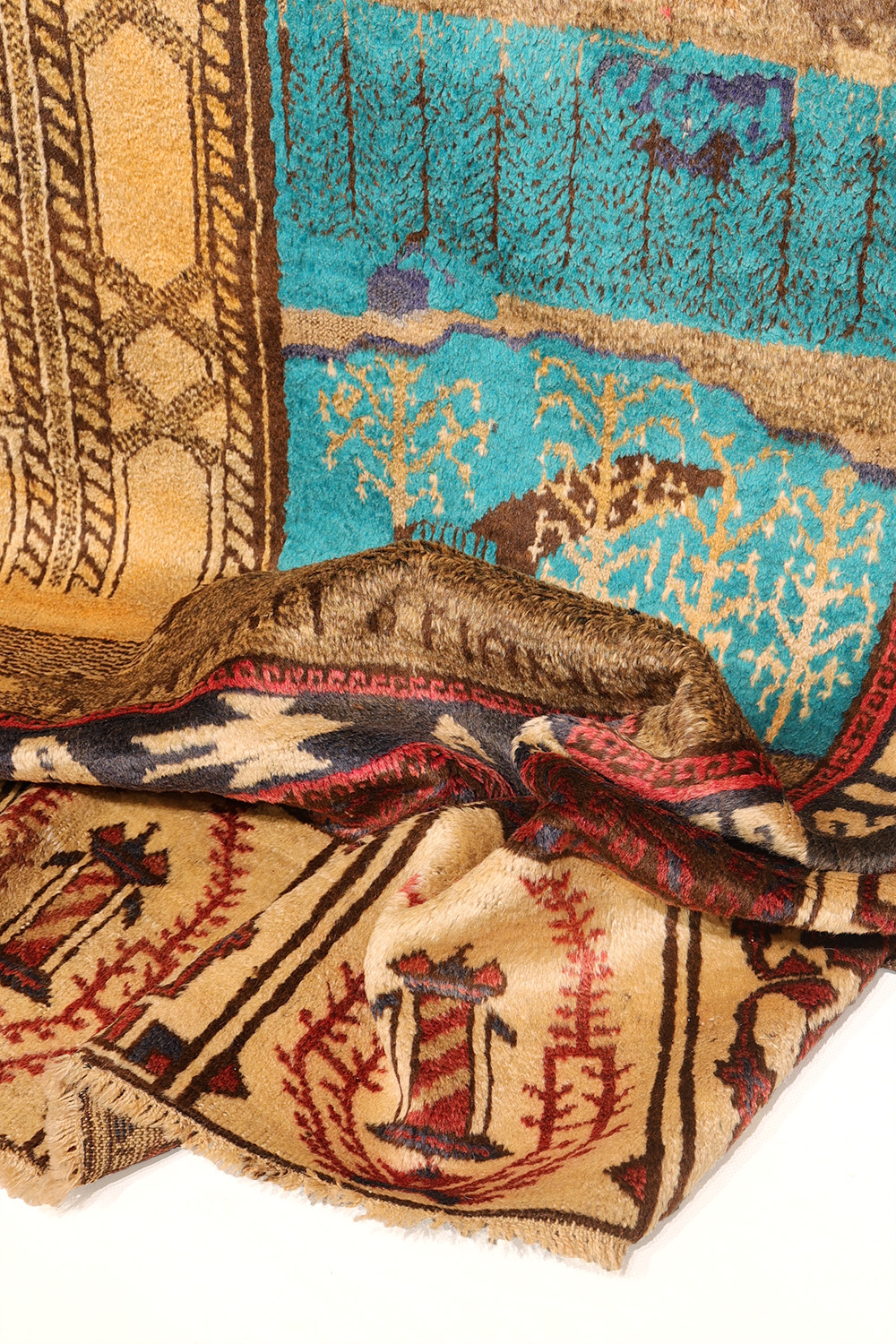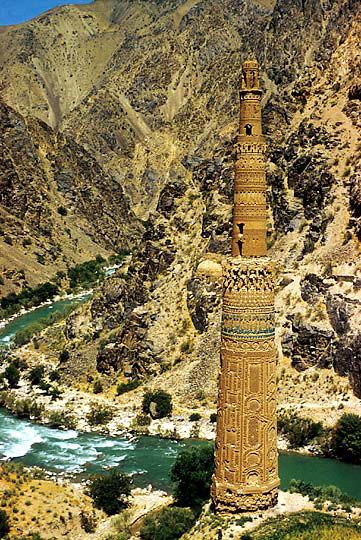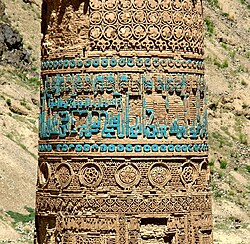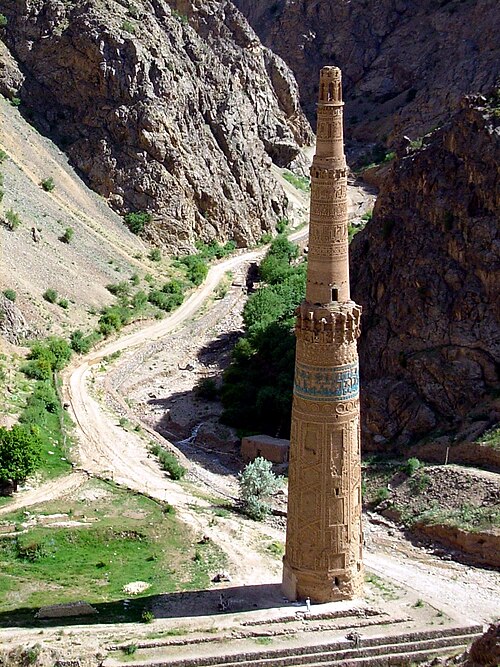2,950.00 €
Rare Baluch War Rug Featuring the Minaret of Jam
After 30 years of collecting, just when I thought I had seen it all… this extraordinary vintage Baluch war rug from Afghanistan proved me wrong. A true one-of-a-kind piece, it not only features classic war motifs but also a deeply symbolic and beautifully woven depiction of the Minaret of Jam.
The Minaret of Jam – History Woven in Wool
The Minaret of Jam (Pashto: د جام منار, Dari: منار جام) is a UNESCO World Heritage Site located in a remote valley of Ghor Province, western Afghanistan. Built around 1190 AD, the 65-meter-tall structure is celebrated for its intricate Kufic and Naskhi calligraphy, geometric designs, and glazed turquoise tiles, all executed in baked brick. Surrounded by towering mountains and set beside the Hari River, the minaret stands as one of the most remarkable architectural achievements of the Islamic world.
Since 2002, the minaret has been listed as a World Heritage Site in Danger, suffering from erosion, flooding, and lack of preservation. In 2014, the BBC reported that the tower was in imminent danger of collapse.
The Rug: A Landscape of Imagination and Memory
This exceptional rug captures both the spirit of the site and the creative imagination of the weaver. Woven by a Baluch artisan, the piece reflects the surrounding landscape, with a lush, colorful riverbed. Interestingly, where the real-life mountains are rocky and barren, the weaver envisions them as vibrant and fertile, filling them with orchards, willows, and bushes.
The central motif is the Minaret of Jam, depicted with striking realism—complete with mud brick structure, turquoise tilework, and Kufic script. This level of precision is made possible by the rug’s fine weave and relatively high knot density.
War in the Sky
Above the peaceful landscape, the weaver has inserted a stark reminder of modern conflict: a deep blue sky filled with airplanes dropping bombs. The contrast between war and serenity creates a powerful emotional tension typical of the most evocative war rugs.
A Border of Mixed Messages
One of the rug’s most fascinating features is its Latin-alphabet inscriptions. The word “Afghanistan” appears several times, though often with misspellings or reversed letters—reflecting the weaver’s exposure to foreign scripts. The phrase “Minaret of Jam” also appears, with similarly playful rearrangements.
The word “Ariana” is also woven into the rug. Ariana was an ancient name for the broader region, used by Greek and Roman geographers to describe a large territory covering present-day Afghanistan, parts of eastern Iran, and what is now northern Pakistan. Today, the name survives in Ariana Afghan Airlines, the national carrier of Afghanistan.
Interestingly, while the original minaret inscriptions were made in ceramic Kufic script, the weaver has chosen a more modern, simplified style for the woven version—adding a layer of contemporary interpretation.
Materials and Condition
The rug is woven with exceptionally soft and lustrous wool, and some undyed sections appear to be camel hair, adding texture and natural variation. Overall, it is in very good vintage condition, with a few noted issues:
- A tear in the lower center, which has been expertly repaired
- Some small areas of low pile, consistent with age and use
Oversized and Outstanding
This rug is unusually large for a war rug, making it a true standout. Its complex composition, fine weave, and rich visual storytelling make it not only a remarkable textile, but a work of cultural and historical significance.
A Unique Opportunity for Collectors
This rug is more than a decorative object—it is a woven document of place, memory, and imagination. A rare piece that speaks to both the artistic heritage and the turbulent history of Afghanistan. An extraordinary addition to any serious war rug or tribal textile collection.
Material: 100% hand-spun sheep wool
Size: 311×217 cms
Origin: Baluch tribe from Afghanistan
Date of weaving: 1980s
The Baloch or Baluch are an Iranian people who live mainly in the Balochistan region, located at the southeasternmost edge of the Iranian plateau, encompassing the countries of Pakistan, Iran and Afghanistan. There are also Baloch diaspora communities in neighbouring regions, including in India, Turkmenistan and the Arabian Peninsula.
The war rug (Persian: فرش جنگی farš jangi) tradition of Afghanistan has its origins in the decade of Soviet occupation of Afghanistan from 1979 and has continued through the subsequent military, political and social conflicts. Afghan rug-makers began incorporating the apparatus of war into their designs almost immediately after the Soviet Union invaded their country. They continue to do so today in the wake of the United States’ 2001 invasion of Afghanistan which ousted the Taliban government of Mullah Omar but has failed to bring an end to violence in the country. The rugs produced in response to these events are among the world’s richest traditions of war art of the late 20th and early 21st centuries.
The terms Baluch and war rug are generalisations given to the genre by rug dealers, commercial galleries, collectors, critics, and commentators. The distinctive characteristic of these rugs is their capacity to convey their makers’ experiences and interpretations of the circumstances and politics of war and conflict in the region.
Since the withdrawal of the USSR, the same themes and subjects have been reused and remade. Additionally, after 9/11 the events of that day were recorded in carpets, and more recently – since 2015 – drones have appeared as subject matter.
Out of stock
Additional information
| Weight | 14.5 kg |
|---|
Subscribe and receive the lastest news
